Shop
Our Basic Steel Arms Set is a complete arm harness that protects your arms from the top of shoulder to the wrist joint. It consists of spaulders cups, steel bicep plates, elbows caps and vambraces. This armor has good mobility and it can be easily taken apart to reduce space requirements for storage and transportation.
This set of steel arms includes elbow cops with rondels and is secured with leather straps and steel buckles. This set provides you excellent mobility for both melées and duels. It is painted on the inside to provide additional protection against rust. Our base option for this set is 1.5mm cold rolled steel which can
Our Steel Arms set is made of 1.5mm cold rolled steel (other thickness and material options are available). It provides protection from the wrist to the lower shoulder. With the help of leather belts and steel buckles it’s very comfortable to wear with other parts of armor and can be donned quickly and easily. It’s
In the middle ages the fortress of Chalcis was a venetian colony. In 1470 it was destroyed by Ottoman Empire. The large hoard of fourteenth- and fifteenth-century armor was discovered in the ruins of the fortress in 1840. The Italian spaulders from the Chalcis armor collection dated from ca.1380 – 1400. Our Spaulders Chalkis consist
We have created a faithful replica of the late XIV century arm harness found in Churburg Castle which consists of vambraces, elbow cops, rerebraces, (which cover the biceps) and articulation segments. Our Churburg Arms are equipped with leather straps and steel buckles and are painted inside to prevent rusting. The vambraces are anatomically shaped and possess
This late XV century full plate arm protection consists of: pauldrons, rerebraces, elbow cops and vambraces. In the first quarter of the XV century, Milanese armorers invented a very simple way to connect all the arm protection segments with the help of leather straps or sliding rivets. This invention eliminated all the gaps in arm
The ruin of the fortress of Chalcis (Greek “Χαλκίδα”) is located on the Greek island of Euboea. In 1157 it was pillaged by Normans. Beginning in 1209 the fortress became a Venetian colony, renamed Negroponte, and was one of the easternmost military outposts of the Venetian Empire. In 1470, after a couple of years of hard
Our Bamberg Brigandine is a stylization of knight armor from the wood carving figure from the Bamberg Cathedral, Bamberg, Bavaria, Germany, c.1370. Source: Charles Boutell “Monumental Brasses and Slabs: An Historical And Descriptive Notice Of The Incised Monumental Memorials Of The Middle Ages” (1847). Approximately from 1360 some of the early brigandines – lentner –
Medieval breastplate armor with a decorative V-shaped rib Churburg Castle offers a lot of excellent examples of the finest medieval armor. It was founded in 1253-1259 by Henry de Montfort, who was a bishop of Chur. The name of the castle comes from the name of rank of this medieval noble. The castle is located
A brigandine was typically made of small plates of steel. However, this proved to be a problem as small plates were less able to take a heavy impact than larger ones. Accordingly, the plates were enlarged over time and were made to be a better anatomical fit. A characteristic feature of big-plate brigandines was a
A brigandine was typically made of small plates of steel. However, this proved to be a problem as small plates were less able to take a heavy impact than larger ones. Accordingly, the plates were enlarged over time and were made to be a better anatomical fit. A characteristic feature of big-plate brigandines was a
Beginning in approximately 1360 lentner armor (a type of armor constructed mainly with leather and a precursor to the brigandine) began to be reinforced by steel plates. This basic armor consisted of steel plates which were riveted or sewn to the base material. Over time, the plates that protect the chest and back became bigger.

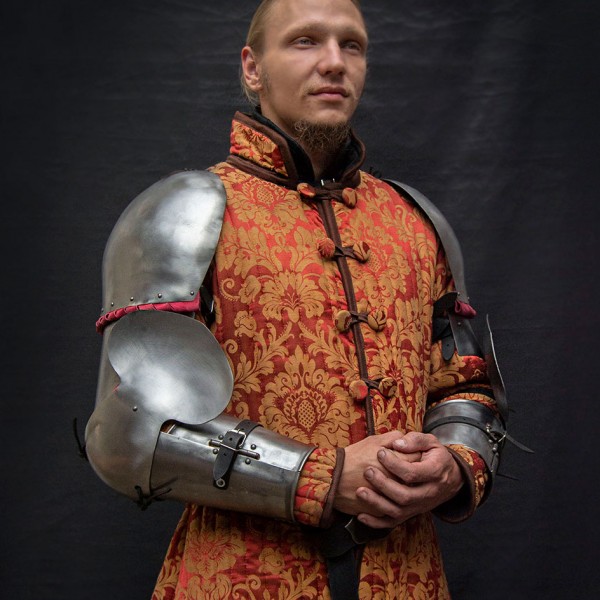


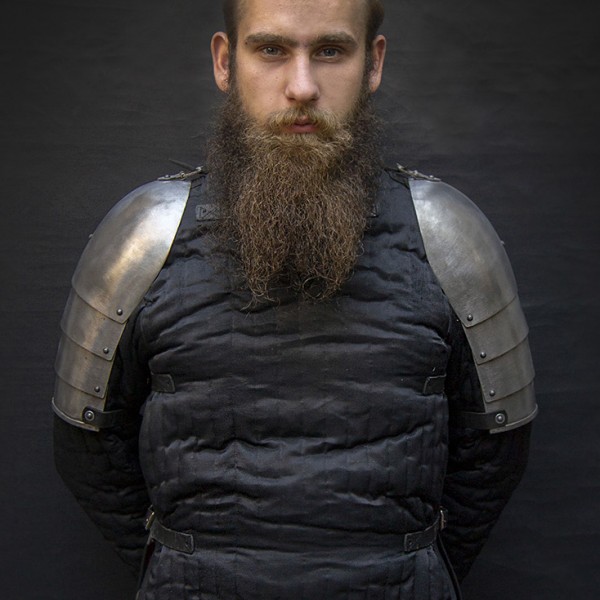
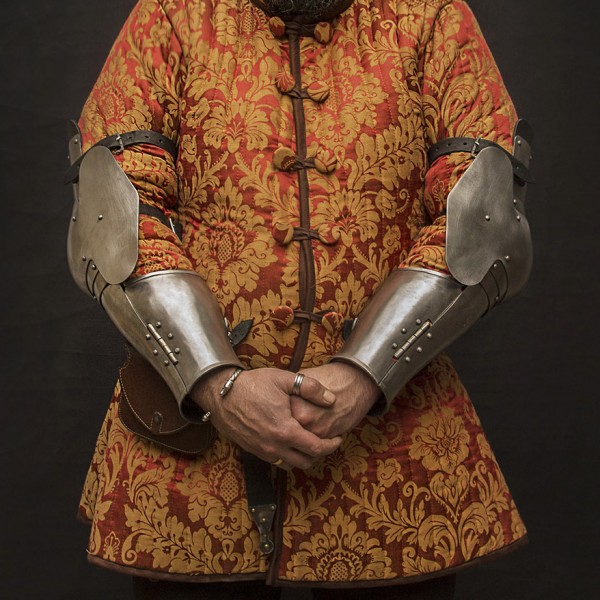
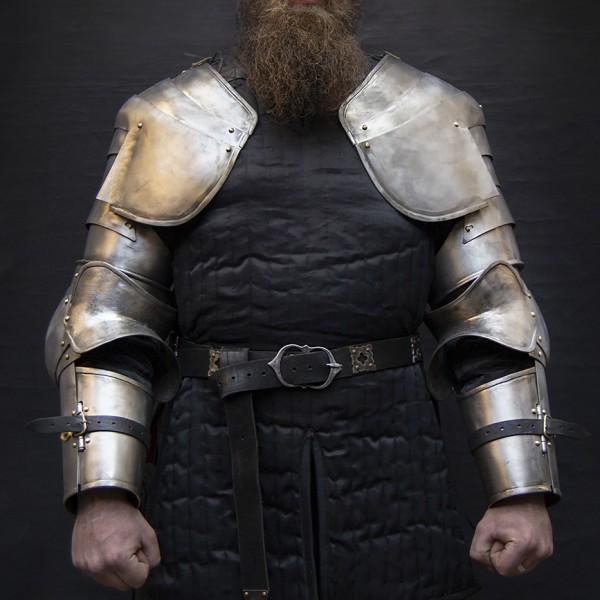
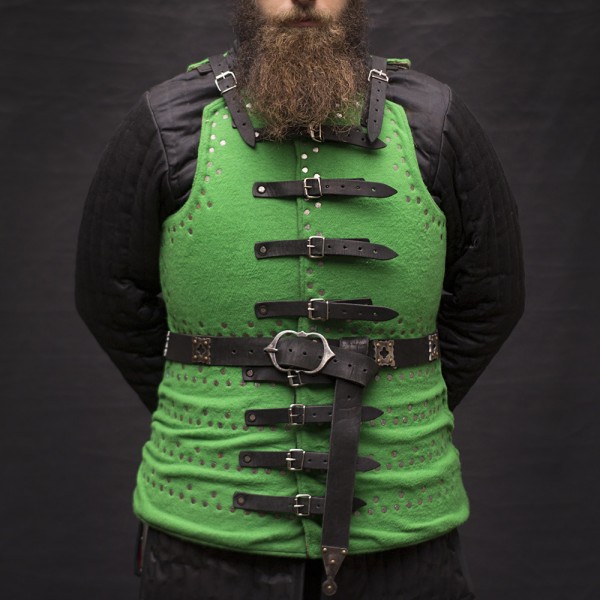
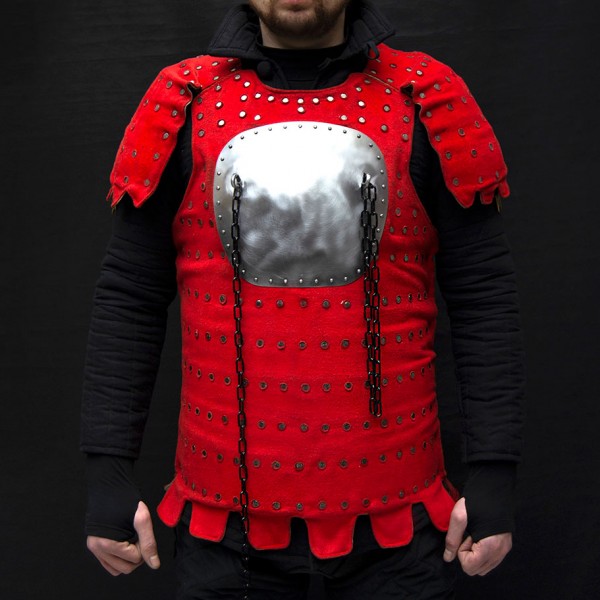
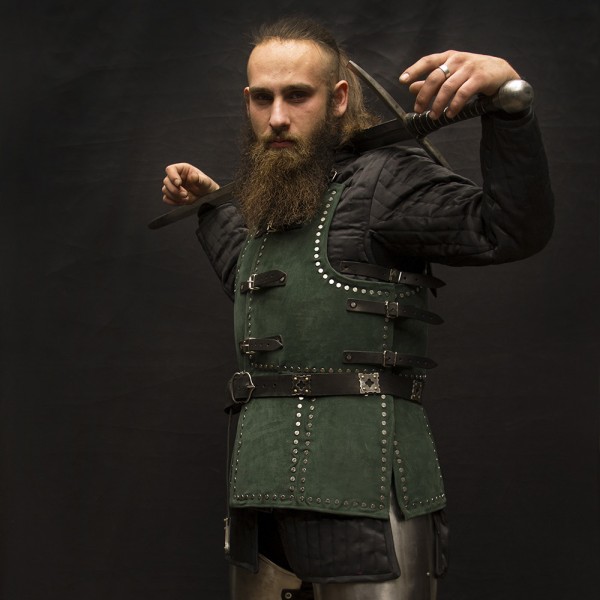



 Shop
Shop